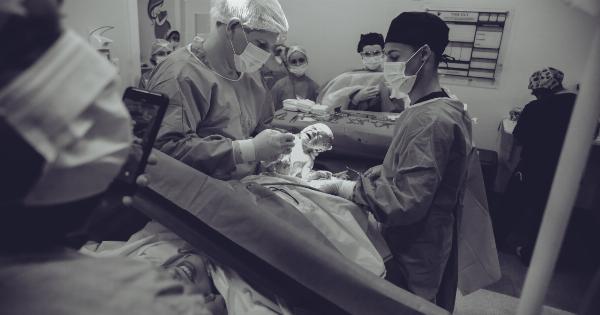Thromboembolic disease is a condition that arises when blood clots form in your blood vessels and obstruct circulation. The condition is potentially life-threatening and can occur in various areas of your body, leading to serious health complications.
It generally presents without noticeable symptoms in most individuals, and hence it is challenging to diagnose. However, it is crucial to detect and treat the disease early to prevent significant damage to your body’s vital organs. Nevertheless, frequent medical tests to detect thromboembolic disease come at a considerable expense.
In this article, we explore the available options for thromboembolic disease detection at no cost.
What is Thromboembolic Disease?
Thromboembolic disease is a condition characterized by the formation of blood clots inside blood vessels. The blood clots called thrombi, obstruct blood flow, leading to various complications.
The condition can occur in any blood vessel in your body, but it is most common in veins present in your legs, thighs, and pelvis leading to deep vein thrombosis (DVT). In some instances, the blood clots can dislodge and travel through your bloodstream, leading to a condition referred to as embolism.
The clot can lodge in a vital organ, cutting off blood supply to the organ, leading to serious complications such as organ damage or failure.
Symptoms of Thromboembolic Disease
Thromboembolic disease often presents with few or no symptoms in individuals. However, some people may present with symptoms that indicate the presence of the blood clots. The most common signs and symptoms of thromboembolic disease include:.
- Pain and discomfort in the affected area
- Swelling in the affected leg or arm
- Warmth and redness in the affected area
- Shortness of breath
- Dizziness and fainting
- Chest pain if the blood clot lodges in the lungs
Causes of Thromboembolic Disease
The formation of blood clots involves a complex process that begins with the damage to your blood vessels. Some of the factors that increase the risk of thromboembolic disease include:.
- Immobility or extended periods of sitting or bed rest
- Underlying medical conditions such as cancer, heart disease, and autoimmune diseases
- Previous history of thromboembolic disease
- Pregnancy
- Age, where older adults have a higher incidence of blood clots formation
- Obesity, which increases the risk of developing underlying conditions such as diabetes and hypertension that can trigger blood clots formation
Diagnosis of Thromboembolic Disease
Thromboembolic disease diagnosis typically involves medical tests that identify blood clots in your veins or arteries. The most common diagnostic tests for thromboembolic disease include:.
- Ultrasound to examine your veins and arteries for blood clots
- D-dimer blood test to measure the level of a protein that indicates the presence of blood clots in the body
- Magnetic Resonance Imaging (MRI) scan to assess the presence and size of blood clots
- Computerized Tomography Angiography (CTA) scan to diagnose the presence of blood clots in your lungs or other parts of your body
Thromboembolic Disease Prevention
Preventing thromboembolic disease involves lifestyle changes, medical interventions, or a combination of both. Some of the ways to lower your risk of developing thromboembolic disease include:.
- Maintaining a healthy weight through regular physical activity and a balanced diet
- Quitting smoking
- Avoiding prolonged periods of immobility
- Wearing compression stockings to improve blood flow in your legs during long periods of sitting
- Taking prescribed blood-thinning medications such as aspirin and warfarin
Thromboembolic Disease Detection at No Cost
Detecting thromboembolic disease early is crucial in managing the condition and avoiding life-threatening complications. However, medical tests for thromboembolic disease detection come at a substantial cost.
Nevertheless, several options exist that can allow you to access the necessary medical tests and diagnosis without incurring significant expenses. Some of these options include:.
Check Whether Your Health Insurance Covers the Costs
Most medical insurance policies cover testing and diagnosis for thromboembolic disease. It is crucial to read the details of your policy and understand the benefits it offers.
Some insurance policies require that you meet specific criteria before they can cover the medical tests and diagnosis. Knowing what your insurance policy covers helps reduce the out-of-pocket expenses incurred in diagnostic tests and treatments.
Participate in Research Studies
Several ongoing research studies require participants with thromboembolic disease. Individuals who participate in these studies receive free medical tests and diagnosis that can help identify the presence of the disease.
Your doctor can help identify the ongoing research studies for thromboembolic disease detection and guide you on the participation process. Nevertheless, it is essential to understand that participating in research studies is voluntary and should be approached with an open mind and commitment to adhere to the requirements and recommendations of the study.
Public Health Clinics and Hospitals
Several public health clinics and hospitals offer free or reduced-cost medical tests such as ultrasounds for DVT detection. The clinics and hospitals target low-income individuals and those without medical insurance.
The tests are usually performed by healthcare professionals, and the results are interpreted by qualified doctors or medical practitioners. It is essential to research and identify the public health clinics and hospitals in your area that offer thromboembolic disease detection services.
Free Medical Tests and Screenings Events
Community organizations and healthcare associations organize free medical tests and screenings events that focus on identifying various medical conditions, including thromboembolic disease.
The events offer an opportunity to access the necessary medical tests and diagnosis without incurring any costs or minimal expenses. It is essential to keep tabs on the schedules of the free medical tests and screening events in your area. Most organizations and associations provide notice through local media channels, social media, and public posters.
Conclusion
Thromboembolic disease occurs due to the formation of blood clots in your veins or arteries. The condition is potentially life-threatening and requires early detection and treatment to prevent serious health complications.
Medical tests for thromboembolic disease detection come at a considerable expense. However, several options exist that can allow individuals to access the necessary medical tests and diagnosis without incurring significant expenses.
It is crucial to seek medical assistance whenever you experience the symptoms of thromboembolic disease and consider preventive measures such as lifestyle changes to lower the risk of developing the condition.



























